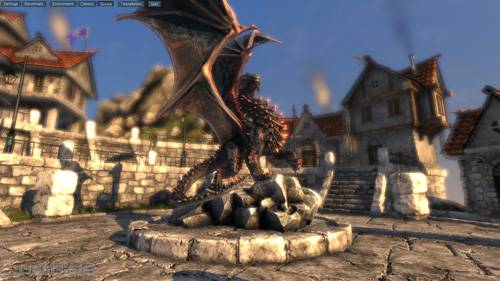- Qualcomm Launches Snapdragon 4 Gen 2 Mobile Platform
- AMD Launches Ryzen PRO 7000 Series Mobile & Desktop Platform
- Intel Launches Sleek Single-Slot Arc Pro A60 Workstation Graphics Card
- NVIDIA Announces Latest Ada Lovelace Additions: GeForce RTX 4060 Ti & RTX 4060
- Maxon Redshift With AMD Radeon GPU Rendering Support Now Available
GIGABYTE Radeon HD 7790 1GB & NVIDIA GeForce GTX 650 Ti BOOST 2GB Review

When there’s a noticeable gap of time in between major GPU launches, one thing’s bound to happen: we’re going to see models get released that slot into gaps we didn’t think existed. That’s the case of both AMD’s Radeon HD 7790 and NVIDIA’s GeForce GTX 650 Ti BOOST, which retail for the same price. Let’s check them out.
Page 6 – Synthetic Tests: Futuremark 3DMark 11, Unigine Heaven 3.0
Although we generally shun automated gaming benchmarks, we do like to run at least one to see how our GPUs scale when used in a ‘timedemo’-type scenario. Futuremark’s 3DMark 11 is without question the best such test on the market, and it’s a joy to use, and watch. The folks at Futuremark are experts in what they do, and they really know how to push that hardware of yours to its limit.
Similar to a real game, 3DMark 11 offers many configuration options, although many (including us) prefer to stick to the profiles which include Performance, and Extreme. Depending on which one you choose, the graphic options are tweaked accordingly, as well as the resolution. As you’d expect, the better the profile, the more intensive the test. The benchmark doesn’t natively support 2560×1600, so to benchmark with that, we choose the Extreme profile and simply change the resolution.


It’s an example like this that proves that synthetic benchmarks shouldn’t be alone trusted to gauge a card’s performance. While NVIDIA’s card out-performed AMD’s in most tests throughout our real-world testing, both cards appear about equal in the Performance test here. When the higher resolution kicks-in, NVIDIA reverts to the same lead we’ve been seeing.
Unigine Heaven 3.0
While Futuremark is a well-established name where PC benchmarking is concerned, Unigine is just beginning to become exposed to people. The company’s main focus isn’t benchmarks, but rather its cross-platform game engine which it licenses out to other developers, and also its own games, such as a gorgeous post-apocalyptic oil strategy game. The company’s benchmarks are simply a by-product of its game engine.
The biggest reason that the company’s “Heaven” benchmark grew in popularity rather quickly is that both AMD and NVIDIA promoted it for its heavy use of tessellation, a key DirectX 11 feature. Like 3DMark Vantage, the benchmark here is overkill by design, so results here aren’t going to directly correlate with real gameplay. Rather, they showcase which card models can better handle both DX11 and its GPU-bogging features.


3DMark favored AMD’s 7790 in the easier test, but Unigine sides by NVIDIA here in both – no doubt once again to the increased and more efficient memory.
Support our efforts! With ad revenue at an all-time low for written websites, we're relying more than ever on reader support to help us continue putting so much effort into this type of content. You can support us by becoming a Patron, or by using our Amazon shopping affiliate links listed through our articles. Thanks for your support!







